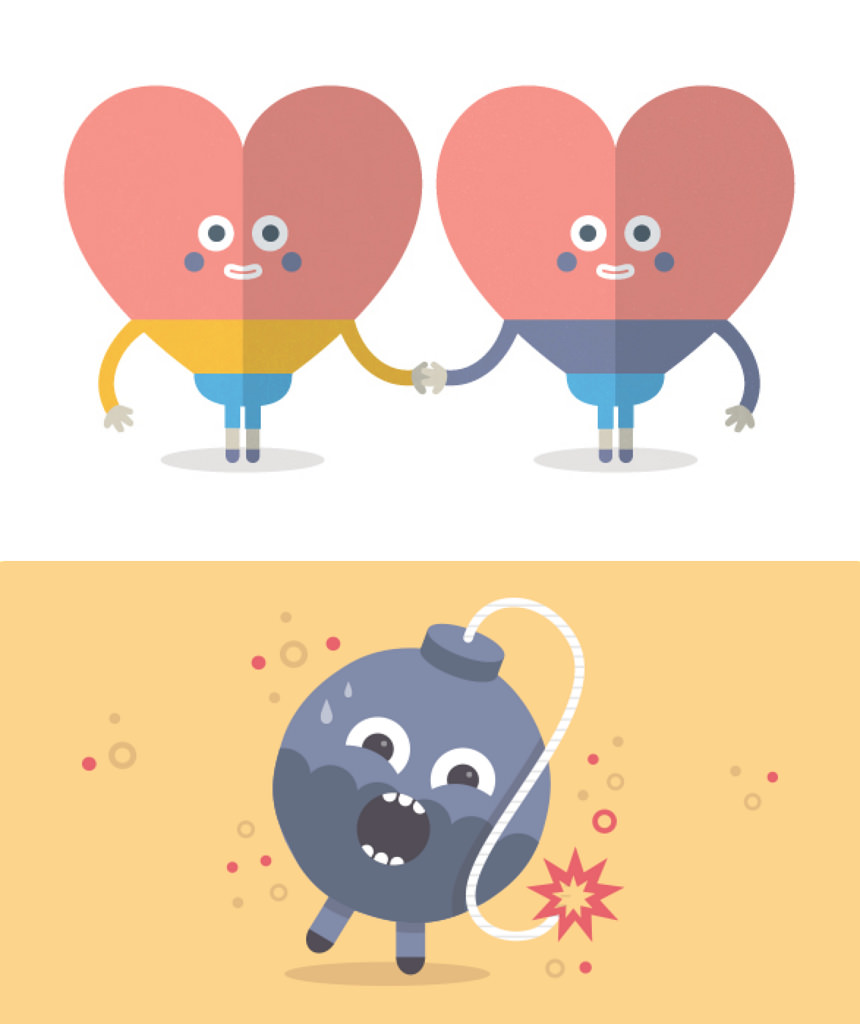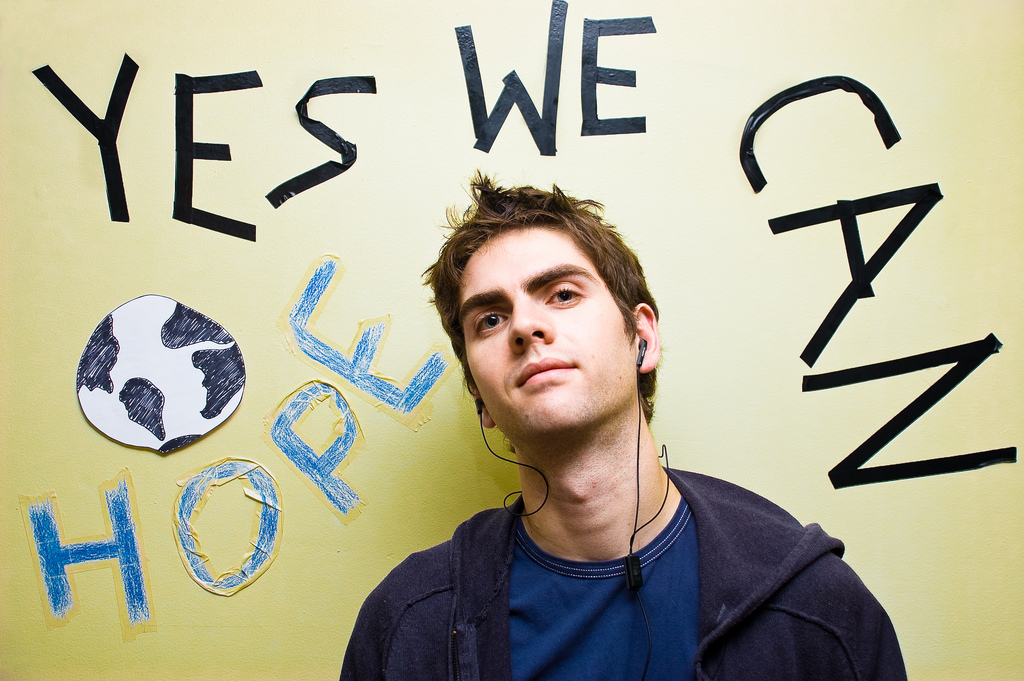There’s an app for that. And that. And pretty much everything.
In terms of mental health improvement, there is a wide selection of apps available for self-help. It sounds like a great idea- it is difficult, and rather impractical, to expect that resources are available to everyone when they need them at an affordable price. Further, the idea of being able to use apps to monitor and improve our own mental health helps us feel in-control. It could be empowering, and for many, an effective complement to other scientifically proven methods such as therapy and meditation for greater emotional stability.
I decided to try 4 free apps for mental health- In-Flow, Optimism, Pacifica, and Headspace- and determine their effectiveness for myself.
Let’s get to it!
This app was created by Optimism Apps, a company founded in Sydney, Australia. Its website states that it has “mood charting apps used by many thousands of mental health professionals and individuals, in over 100 countries and on all continents.” Its high user ratings (currently rated 4/5 stars by 36 people on the App Store) and extensive tracking features are what attracted me to this app. For each day, the user is able to create a log in 5 categories: Core Data, Stay Well Strategies, Triggers, and Symptoms. Within each category, there is a sliding bar for rating specific feelings and strategies from 0 to 10. For example, one can rate mood, coping mechanisms, sleep quality, and stress at home or work. One can also select from yes/no options about triggers, such as “too much to do” and “negative self-talk.” After recording these, there is a category labeled “Notes” in which one can add any other details, if desired.
At first, I was overwhelmed with all of the recording that had to be done in this app. It seemed like a long survey with vague questions. For example, I had to select “yes/no” to “poor diet.” How poor should my diet be to be labeled “poor?” I had to similarly select whether or not I experienced a “loss of interest” each day. What if I experienced a loss of interest in the beginning of the day, and then felt interested in something around the afternoon, but then again lost interest by bedtime? My moods, as those of others, fluctuate throughout the day.
At the bottom of the categories to be filled out each day, there is an option to view charts and reports. This data can be especially helpful for clinical use, and is in fact available through a dashboard for medical professionals who sign up for the app and are authorized by clients to view the records.
Overall, I found Optimism to be, more than anything, a great chance to reflect on myself and check in with my emotional state. It helped me narrow down to what I was feeling to a reasonably meaningful level, and keep track of my behavior so that I was more self-aware and conscious of my thoughts and reactions.
 Photo Credit: Flickr/Normand
Photo Credit: Flickr/Normand
Related articles: “A PROFILE OF A BURNOUT PHYSICIAN”
“THE COLLEGE STUDENT MENTAL HEALTH CRISIS: WHAT CAN WE DO NOW?”
Rated 4/5 by 644 people on Google Play, In-Flow was created by AITA LIMITED. Upon signing up, the user is directed to a menu screen where one can select from 4 options: find “Friends,” check stats, get advice, and view the calendar with data recorded. At the bottom, one is prompted to “check-in.” To complete the check-in process, one must simply select from 7 options represented by different pairs of eyes, ranging from “I am quite tired” to “I am quite energetic.” One also must select from 7 options represented by different mouth expressions, from a sad face for “I feel awful” to a wide, toothy grin for “I feel excited.” After this, one selects options to provide more details about the chosen mood- Where is this person? Whom are they with? What are they doing? After answering these three questions, one can view a chart showing mood patterns over time.
Despite its high ratings, I was a bit disappointed with this app. First, in order for it to be effective, I realized that I had to check in at different times throughout the day. This was difficult for me because I checked in usually at the end of the day, when I was about to go to bed or was relaxing. Therefore, my moods and activities were almost the exact same for all of my check-ins. The good thing is that there is the option to check-in multiple times throughout the day to track mood changes, but I wouldn’t think of checking in while I’m out with friends, while I’m studying for an exam, or at another point during which my mood would be more extreme. This is why I feel that the app has potential if the user is disciplined enough to check-in at specific and multiple times throughout the day, perhaps even just a certain number of times so that one can catch the more “interesting” mood shifts through the check-ins. Also, the app is very limited as to the range of emotions felt. Our feelings are definitely more complicated and extensive than the combinations that can come out of 7 sets of eyes and 7 mouths (28 to be exact).
This is a much more established, well-reputed app created by Dale Beermann and Chris Goetell in 2014. Pacifica has strong backing from companies such as Buzzfeed, Bustle and TechCrunch. It is also backed by psychological and behavioral studies on Cognitive and Behavioral Therapy, or CBT. The website has its own blog tab, information about CBT, a page of mentions in the press and access to mental health resources for anxiety, depression and stress.
I love the availability of various free features on this app. One can track one’s mood daily, and then proceed to do something about it from a set of options at the bottom. The options include settings daily and long-term goals, as well as choosing from a variety of short guided meditations (with awesome background music choices, such as Summer Night, Underwater and Thunderstorm). One can also record thoughts for the check-in, and is then prompted to highlight negative thoughts and change them to positive or neutral ones in order to practice detachment from unhelpful thoughts.
A part of finding inner peace is simply acknowledging thoughts and feelings rather than trying to change them or judge them.

In This Photo: A monk listens to a radio program on his cell phone. Photo Credit: Flickr/KX Studio
I was rather pleased with this app. The meditations were useful and calming, and being able to set and “confirm” the completion of daily goals made me feel more accomplished and motivated to get tasks done throughout the week. For more features and access to updates, one can purchase Pacifica Premium for $2.50 per month for a year subscription, or pay $3.99 on a monthly basis. In spite of its abilities, it is still rather lacking in its free features, as the emotions are even more limited and it was a bit frustrating to change thoughts to positive ones when my thoughts were rather neutral. Further, it got annoying to be forced to change the thoughts to make them more “balanced,” because I knew that simply saying, “I have to do my best in order to get a summer internship rather than constantly worrying about it” was not going to change the fact that I was freaking out. I strongly believe that a part of finding inner peace is simply acknowledging thoughts and feelings rather than trying to change them or judge them.
This app was by far my favorite. It is rated 4.5/5 by over 16,000 users on Google Play and is based out of LA and London. Its website states that it has over 4 million users in over 150 countries, and the company is expanding rapidly. The app offers a 10-day free trial which features 10 guided meditations that are each 10 minutes long. The subscription cost is much higher compared to other apps- it costs $7.92 per month for a yearly subscription and $12.99 on a month-by-month basis, along with an option for a “forever” subscription for $399.99. Pricey? Absolutely. But after using this app, I feel like it could be very well worth it.
What is so amazing about this app? Well, the number of meditation sessions is enormous, for one thing. There are meditations for health, relationships, mindfulness, and performance, each with several “levels.” These meditations are available for subscribers only, and are up to 30 minutes in length each. Further, the amount of creativity put into the animations (yes, there are actually cute, little animations between and during some sessions!) is uplifting and captivating in itself. The animations do a great job to explain different concepts of mindfulness, and are each followed by meditations so that one can practice the concepts and tools learned. They helped me visualize the concepts and make more sense of them, and to make the meditations more meaningful for me. I highly recommend this app to people even for just the 10-day free trial if one wants to try guided meditations for mental health improvement.

In This Photo: A snapshot of a Headspace app animation. Photo Credit: Flickr/Kofopoulos
My Verdict: Try them, but not all together. Each application utilizes different methods to address unique aspects of mental health, so focus on the one you feel is the most applicable to you and your circumstances. The apps are nevertheless at the very least insightful and reflective opportunities … not to mention that all are free for trying out! Each app has a slightly different set of tools and strategies that it encourages the user to utilize, and will work differently depending on the user. My suggestion is to try them, try others, and see what floats your own, individual, customized boat. If an app seems helpful after a free trial, perhaps buy a subscription. And, in my opinion, don’t hesitate to pay a bit for these apps if they are working for you. Peace and emotional balance are well worth the investment!



 Photo Credit: Flickr/Normand
Photo Credit: Flickr/Normand





